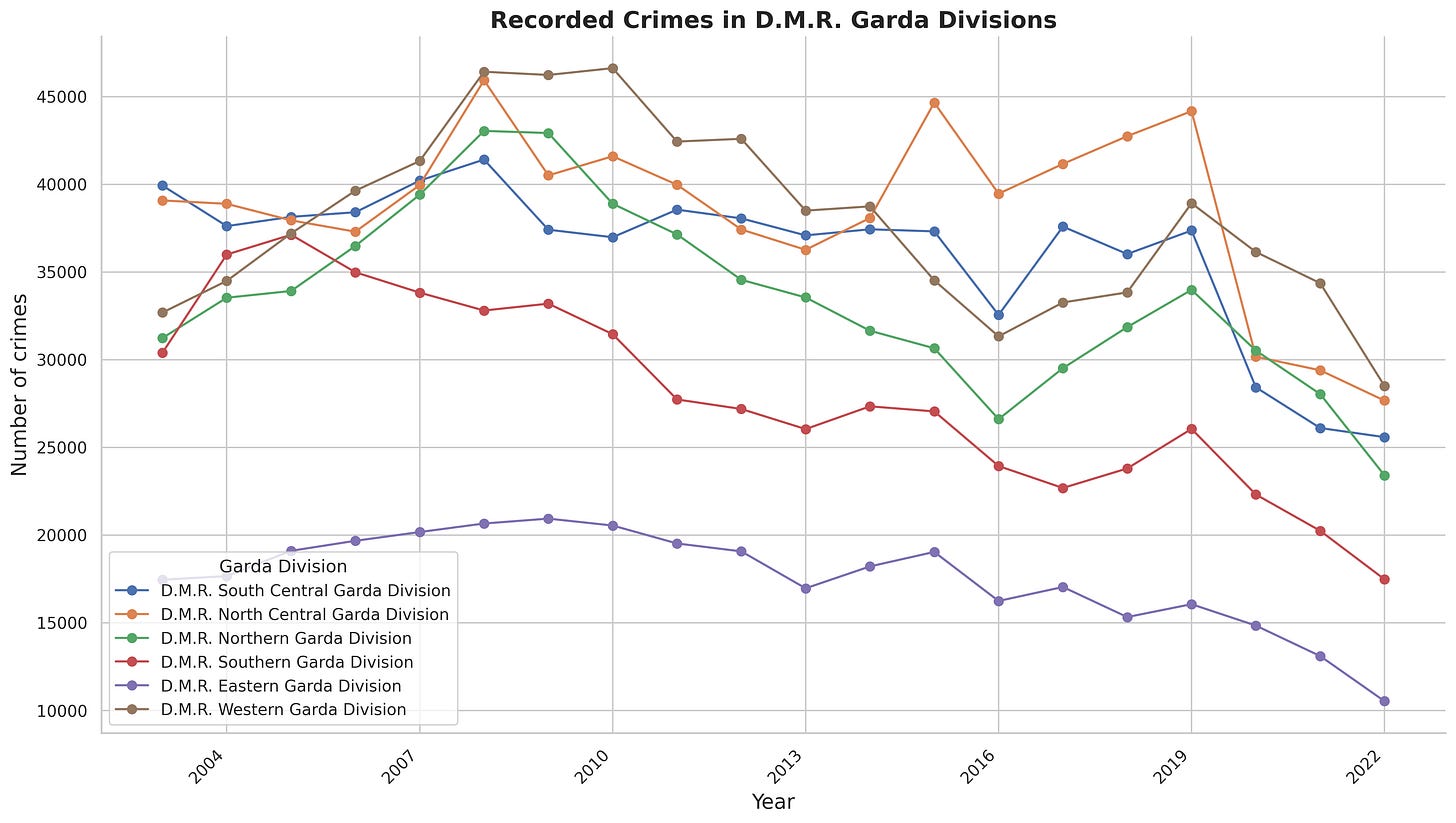Crime in Ireland; Analysing CSO Data from 2003 to 2022
Is it trending? Let's look at some CSO data to determine that.
Over the past decade, crime rates in Ireland have generally declined according to publicly available data. However, this trend is often obscured by asymmetric media coverage. Research suggests that media coverage of crime has increased fivefold, leading to a disproportionate perception of crime incidents. This media amplification overshadows the actual statistical data. I analysed publicly available Central Statistics Office (CSO) data (excluding crime counting rules until Q4 2017 whereby after only a single incident is counted in cases deemed to be a continuous series involving the same victim and same offender) from 2003 to 2022.
Notably, certain divisions, such as the D.M.R. Western and Southern Garda Divisions, show higher crime densities in earlier years, with a visible decline over the years, reflecting the overall trend of decreasing crime rates. Theft and related offences constitute the largest proportion (22.6%), followed by public order and social code offences (11.6%), and disorderly conduct (9.9%). This tells us the predominance of non-violent crimes in recent years, even though media reporting suggests a much higher prevalence of violent crimes.
There is much to be said about 2023 and 2024, and I'm hoping to do a much deeper analysis of that data, particularly correlating at specific events, sometime in the future.








